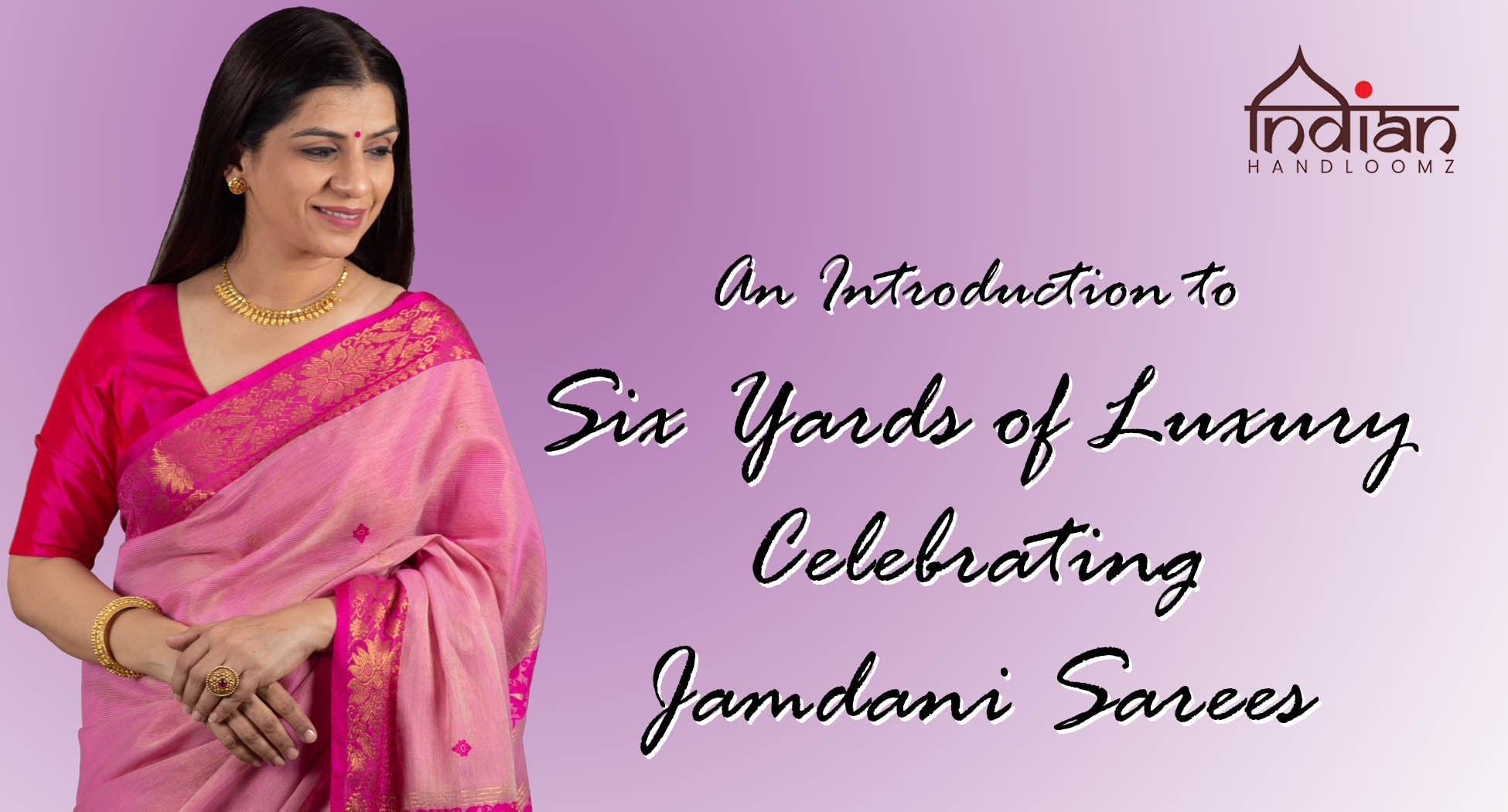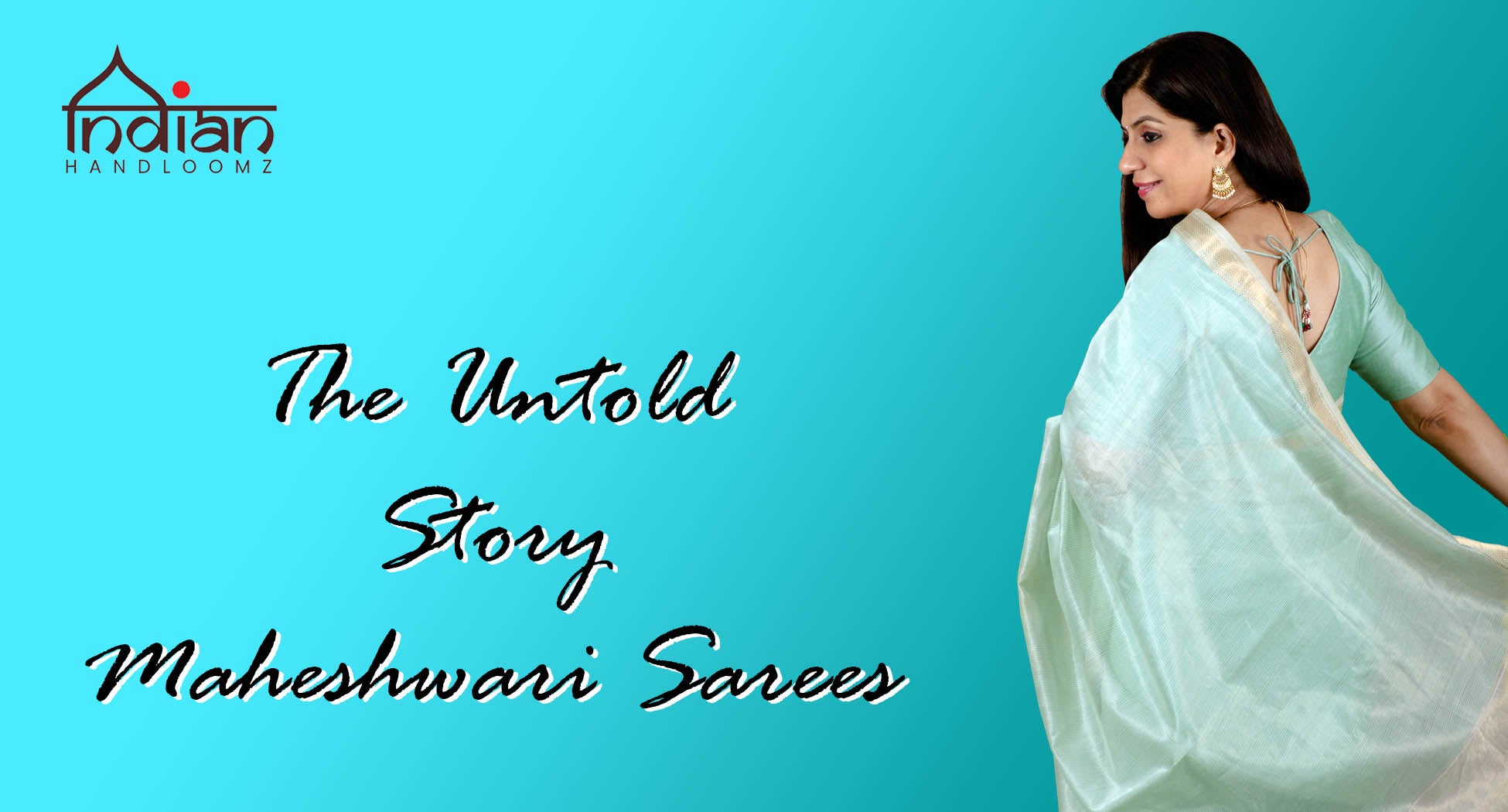
An Introduction to Six Yards of Luxury – Celebrating Jamdani Sarees
Regarded as one of the ancient forms of clothing in the world, sarees embody a one-of-a-kind blending of tradition and style. From ethnic genres to designer creations, we find sarees of different essences to match the exclusivity of every event and festival. As the national wear for women in India, this unstitched piece of garment has garnered worldwide attention for obvious reasons. From the way it is tactfully draped around the body to how it is paired with the right kind of accessories, everything about sarees has been impressing and intriguing people for ages. Apart from touching upon the evolution of sarees briefly, we shall also delve into the history of jamdani, its unique ways of weaving, and social-cultural impacts. So, let us begin.
History of Sarees – An Overview
Embedded deeply in our society, sarees have been considered as a symbol of femininity in India. Be it classical Sanskrit literature, or traditional sculptural art, every archaic source underlines the popularity of sarees as a woman’s wear since time immemorial. Some also argue that the practice of wearing unstitched clothes dates back to the Indus Valley Civilisation based on certain excavated evidence. Most importantly, a popular and powerful reference to saree can be found in the Mahabharata wherein Draupadi’s vastra haran paved the way for the Kurikshetra Yuddha.It is also interesting to point out that earlier Hindu women would drape sarees without chest bands. And it was only after the arrival of foreign rulers that they had to pair their sarees with chest bands or blouses as per the sartorial dictums of the ruling dynasties. In this connection, we must also remember the contributions of Jnanadanandini Devi, the eldest daughter-in-law of the Tagore family, in revolutionising this ethnic wear. Taking a cue from the Parsi costumes, Jnanadanandini Devi, the wife of Satyendranath Tagore, adopted and preached the style of pairing blouses and jackets with sarees. Besides, she was also credited for introducing a convenient style of draping sarees wherein the pleats would be evenly tucked into the waist to allow easy body movements. Her modern draping style became popular not only in Bengal but across the country. Proper draping instead of random wrapping allowed women to move around freely and with dignity.
Types of Fabrics
Although national wear, sarees come in diverse patterns, colours, and are made of different materials. Each part of our country embraces this clothing with certain modifications as per respective conveniences. Here are some common fabrics used by our rural artisans to manufacture the finest sarees in India.
Cotton
Due to its convenience and breathability, cotton is an extremely popular fabric used for making sarees. This easy to wear fabric can also be mixed with other materials to design diverse variants of sarees like Dhakai, Chanderi, Tant, and so on. Cotton sarees are perfect as daily wear for their light texture and versatility.
Silk
Sarees made of this fabric are luxurious in their look and feel. This fabric can be woven from various kinds of natural silks like tassar, eri, moonga, so on. Is anyone’s festival look even complete without draping a rich silk saree? These are a must in our wardrobes for their colourful and aesthetic appeal.
Linen
Sustainable and durable, the linen fabric has garnered a lot of attention lately. Given its soft and breathable nature, linen is being increasingly used to make ethnic sarees in India. Made from sustainable flax crops, linen is biodegradable and hypoallergenic.
Evolution of Jamdani – A Historical Context
Do you treasure an extensive collection jamdani sarees in your wardrobe? But how much do you know about its origin? The art of weaving these sarees indeed reached its peak under the stewardship of Bengal Nawabs during the Mughal rule. However, the mention of Vanga, a soft textile fabric in Chanakya’s Arthashastra is almost always regarded as the oldest reference to jamdani.During the Mughal rule, Bengal became world-famous for producing the best quality jamdani fabrics. Given the exceptional artistry of the Muslim weavers, the district of Dhaka soon emerged as the epicentre of jamdani production. Moreover, these traditional industries received the patronage of the Nawabs and aristocrats, which boosted the production and demand of jamdani fabrics in both domestic and international markets even further. However, the jamdani industry received a setback with the arrival of Britishers who inundated the market with cheap textile products. This led to a steady decline of handloom industries, not to speak of the helpless condition of Muslim weavers whose products failed to compete with the imported items.
Unique Technique of Weaving
While other fabrics are all about designs printed or embroidered on them, with jamdani, it is a whole new set of artistry wherein the intricate designs are meticulously woven into the fabric. Using the weft technique, the artisans firstly create the base material, and upon which, the supplementary weft motifs are added. They add each weft motif manually into the warp using bamboo sticks. From flower motifs and butidar to terchhar and mango motifs, a range of designs are created on jamdani sarees to amplify their appeal before the worldwide audience. It is also interesting to point out that in this technique no pattern or design is drawn on the fabric. Rather, the patterns are sketched on the graph paper and positioned under the warp. The compact design of cotton thread and golden zari is obtained when an extra weft is woven like a grid pattern on the warp. Considered to be the best out of all jamdanis, Dhakai jamdani sarees boast of excellent workmanship with flawless motifs and designs. No wonder, it takes 9 to 12 months to weave one Dhakai jamdani! On the other hand, Tangail jamdani has loose weaves and is less time-consuming to design. Tussar jamdani with silver zari is another variant that undergoes exhaustive weaving due to round butta patterns.
Popularity of Jamdani During Post Independence
With the partition, the major jamdani producing districts have gone to Bangladesh, while West Bengal in India is left with certain popular regions like Shantipur and Dhaniakhali. To offset the damages done to the industry by the British, the governments of respective countries have taken steps to revive the popularity of this heritage fabric. Bangladesh is the dominant exporter of authentic Dhakai jamdani, with India being the major importer of them. It is worthy to mention that jamdani is recognised as an intangible cultural heritage by UNESCO. That certainly speaks volumes of the legacy of this art of weaving! Conclusion – Being labour-intensive artistry, jamdani sarees boast of original and exquisite handwork. Along with the vibrant visual, these sarees can easily bed draped and flaunted in style. To salute the exhaustive craftsmanship of our exceptionally talented weavers, we must wear and promote our ethnic garments with no hesitation. So, let us cherish these six yards of elegance to keep alive and celebrate our tradition and culture amid the waves of westernisation.



Leave a comment
This site is protected by hCaptcha and the hCaptcha Privacy Policy and Terms of Service apply.